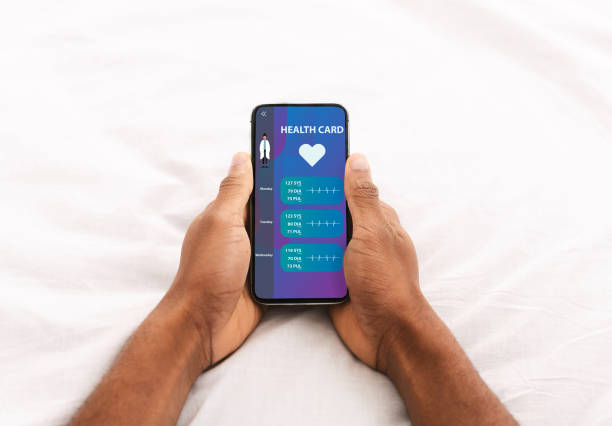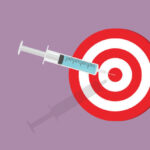Remote monitoring of vital signs is a preventive care innovation that enables healthcare providers to track patients’ crucial physiological parameters, such as heart rate, blood pressure, respiratory rate, weight, and temperature. This approach leads to the early detection of diseases and health concerns and enables timely medical interventions to improve patient outcomes. With advancements in remote monitoring, wearable devices, and mobile health applications, qualified medical professionals can continuously monitor patients’ vital signs from anywhere.
This article explores remote patient monitoring of vital signs, the technologies that enable it, and the significant benefits remote monitoring provides to patients and healthcare teams regarding accessibility, convenience, early diagnosis, and patient empowerment.
Understanding Remote Patient Monitoring of Vital Signs
Remote patient monitoring of vital signs involves using various RPM devices with sensors that collect health data in real-time. The most common data collected typically include heart rate, blood pressure, oxygen saturation, respiratory rate, and temperature. By employing these IoT medical devices, qualified healthcare professionals can continuously monitor patients’ vital signs outside traditional hospitals or clinics.
What are the Major Vital Signs?
Vital signs are measurements of the body’s most basic functions. Furthermore, vital signs monitoring is the continuous or periodic assessment of essential physiological parameters that provide information about a person’s overall health and well-being. The 4 significant vital signs include:
- Pulse (heart rate)
- Respiratory rate (breathing rate)
- Body temperature
- Blood pressure
Monitoring these parameters helps healthcare professionals evaluate a patient’s physical condition, detect abnormalities, track changes over time, and make informed medical decisions. Below is an explanation of the 4 critical vital signs and their significance.
Remote Monitoring of Vital Signs: Heart Rate (Pulse)
Heart rate is the number of times the heart beats per minute (BPM). It indicates the heart’s efficiency in pumping blood throughout the body. Typical resting heart rates typically range from 60 to 100 BPM, but this can vary depending on age, fitness level, and overall health. First, refer to the American Heart Association’s chart to find your target heart rate. Then, locate the corresponding age category most similar to yours.
A remote blood pressure monitor helps individuals ensure that their heart rate and blood pressure stay within a healthy range. FDA-cleared blood pressure monitors display heart rate, systolic blood pressure, and diastolic blood pressure.
Remote Monitoring of Vital Signs: Respiratory Rate
The respiratory rate refers to the number of breaths taken per minute. It provides data about lung function and the body’s oxygen exchange. As a person inhales, oxygen enters the lungs and reaches the organs, while exhaling expels carbon dioxide from the body. Therefore, maintaining a normal respiratory rate is crucial for sustaining a balanced oxygen and carbon dioxide level within the body. Normal resting respiratory rates usually range between 12 and 20 breaths per minute.
Pulse oximeters, typically used on the fingertips, can measure respiratory rate and blood oxygen levels. They also assess the efficient distribution of oxygen to peripheral areas of the heart. Clinicians rely on FDA-cleared pulse oximeters for accurate measurements of blood oxygen level, pulse rate, and perfusion index to aid in formulating comprehensive patient treatment plans. Remote respiratory monitoring can also monitor peak expiratory flow with a peak flow meter.
Remote Monitoring of Vital Signs: Body Temperature
Body temperature is a measure of the body’s internal heat. It helps assess metabolic activity, detect infections, and monitor treatment response. Average body temperature varies depending on the measurement location but typically falls within the range of 97°F to 99°F (36.1°C to 37.2°C).
Body temperature deviates from normal levels due to either fever, characterized by a high temperature, or hypothermia, characterized by a low temperature. The American Academy of Family Physicians defines a fever as an elevation of body temperature by one degree or more above the standard temperature of 98.6 degrees Fahrenheit. On the other hand, hypothermia is described as a decrease in body temperature below 95 degrees Fahrenheit.
Cast studies in RPM underscore the immense potential of vital sign monitoring for general surgery and wound care. By promptly detecting and addressing postoperative complications, it has the power to save lives and significantly enhance patient care. For instance, RPM is used to detect a common complication in cancer patients known as febrile neutropenia. RPM thermometers include contact and non-contact solutions that allow for the scanning of symptomatic individuals.
Blood Pressure
Although blood pressure is not considered a vital sign, it is often measured along with the principal vital signs. Blood pressure measures the force exerted by blood against the walls of the arteries. It is typically represented by two numbers: systolic pressure over diastolic pressure (e.g., 120/80 mmHg). Systolic pressure represents the force when the heart contracts, while diastolic pressure represents the pressure when the heart relaxes. Normal blood pressure for adults is generally around 120/80 mmHg.
A blood pressure monitor provides information about systolic blood pressure, diastolic blood pressure, and heart rate. The systolic blood pressure measurement, represented by the top number, reflects the pressure exerted on the arteries when the heart contracts during a heartbeat.
Insights into Remote Monitoring of Vital Signs
Integrating remote patient monitoring of vital signs into healthcare practices offers several notable advantages. First, it allows healthcare providers to extend their reach beyond physical consultations, providing continuous care to patients irrespective of geographical location. This is particularly beneficial for individuals residing in rural areas or those with limited mobility.
Remote monitoring of vital signs monitoring can be performed in ambulatory settings or at home with RPM devices. However, FDA-cleared RPM devices transmit real-time vital sign data directly to the patient’s physician. RPM devices allow for continuous monitoring and early detection of any abnormalities or trends that may require medical intervention.
Monitoring vital signs at home generates a wealth of data to be analyzed for valuable insights. With RPM platforms, qualified healthcare professionals can see vital sign trends and better understand patient health patterns. In addition, this data can help identify triggers, assess the effectiveness of interventions, and support evidence-based decision-making for optimal health management.
Benefits of Remote Monitoring of Vital Signs
With Internet of Things (IoT) technology, remote monitoring of vital signs allows patients to track and share health data with healthcare providers. That is particularly useful for individuals with chronic conditions. Additionally, those requiring postoperative care benefit from timely intervention and a reduced need for frequent hospital visits.
1) Convenience and Comfort
Remote monitoring of vital signs eliminates the need for frequent visits to healthcare facilities. By utilizing RPM devices, individuals easily measure their heart rate, blood pressure, respiratory rate, body temperature, and oxygen saturation level without ever leaving their homes. This convenience saves time, reduces travel-related stress, and enhances overall comfort, particularly for individuals with limited mobility or those living in rural areas.
2) Early Detection of Health Changes
Regular monitoring of vital signs at home enables individuals to establish baseline measurements and detect deviations early on. Tracking their vital signs over time, people can identify trends, recognize subtle changes, and proactively address potential health issues. Early detection allows for timely intervention and can lead to improved management of chronic conditions.
3) Increased Awareness and Empowerment
Remote monitoring of vital signs promotes self-awareness and empowers individuals to participate actively in their health management. By understanding proper placement of devices for measuring their baseline readings and observing any fluctuations, patients can make informed decisions about lifestyle modifications, medication adherence, and seeking medical attention when necessary. This sense of empowerment fosters a proactive approach to health.
4) Enhanced Doctor-Patient Collaboration
Remote monitoring of vital signs facilitates communication and collaboration between patients and healthcare providers. By regularly sharing vital signs with their doctors, individuals provide a comprehensive picture of their health status. This data enables healthcare professionals to adjust treatment plans and provide personalized guidance based on real-time data. Remote monitoring also allows virtual consultations, minimizing the need for in-person visits.
5) Better Access to Quality Care
Remote patient monitoring allows patients in rural areas to connect with healthcare providers. They benefit from virtual consultations, real-time remote monitoring of vital signs, and remote diagnosis. This empowers healthcare professionals to deliver timely interventions, removing geographical barriers and limited access to quality medical care. Furthermore, monitoring vital signs at home reduces travel-related expenses and is convenient for patients in rural communities.
Remote Monitoring of Vital Signs: Key Points
Remote monitoring of vital signs empowers individuals to engage in their health management journey actively. Convenience, early detection of health changes, increased awareness, and collaboration with healthcare providers improve outcomes. By embracing the opportunity to monitor vital signs at home, individuals can take charge of their health, make informed decisions, and contribute to a proactive healthcare approach that prioritizes prevention and personalized care.
Are you ready to get RPM healthcare solutions started for your healthcare partner? Schedule a free demo and consultation today with Tenovi. You’ll discover why Tenovi offers a better RPM experience for patients, physicians, and healthcare teams. No syncing. No apps. It just works—automatic and secure transmission of patient measurements within seconds.






